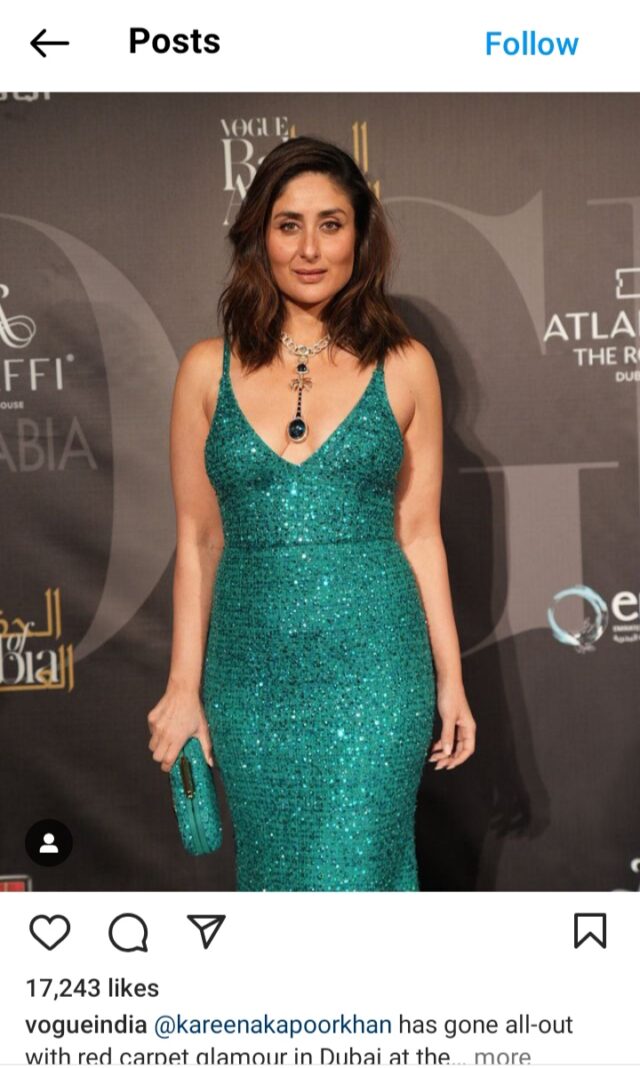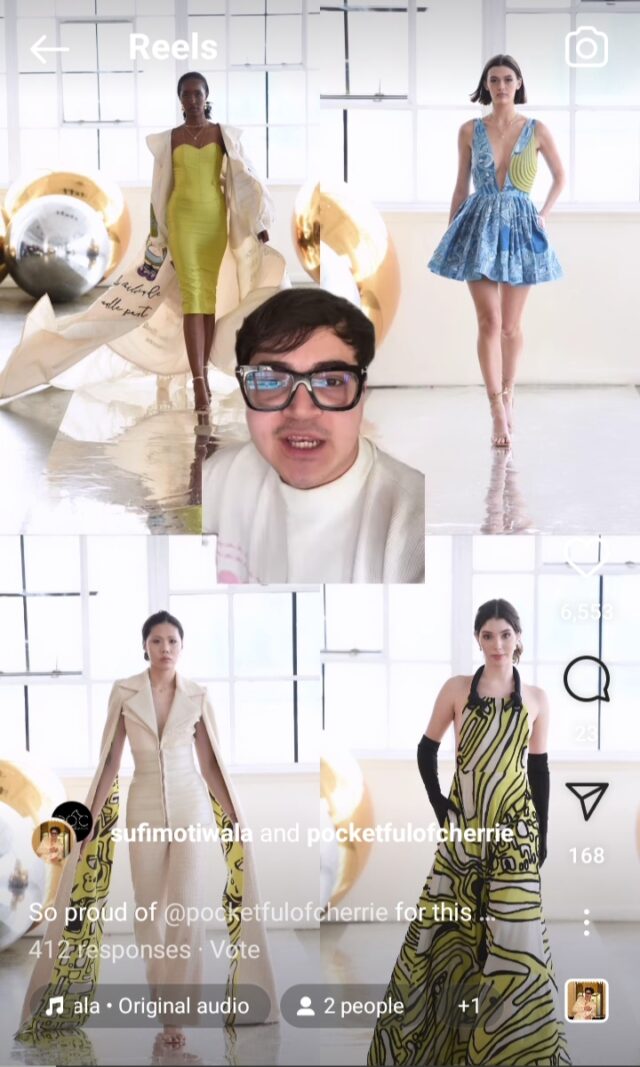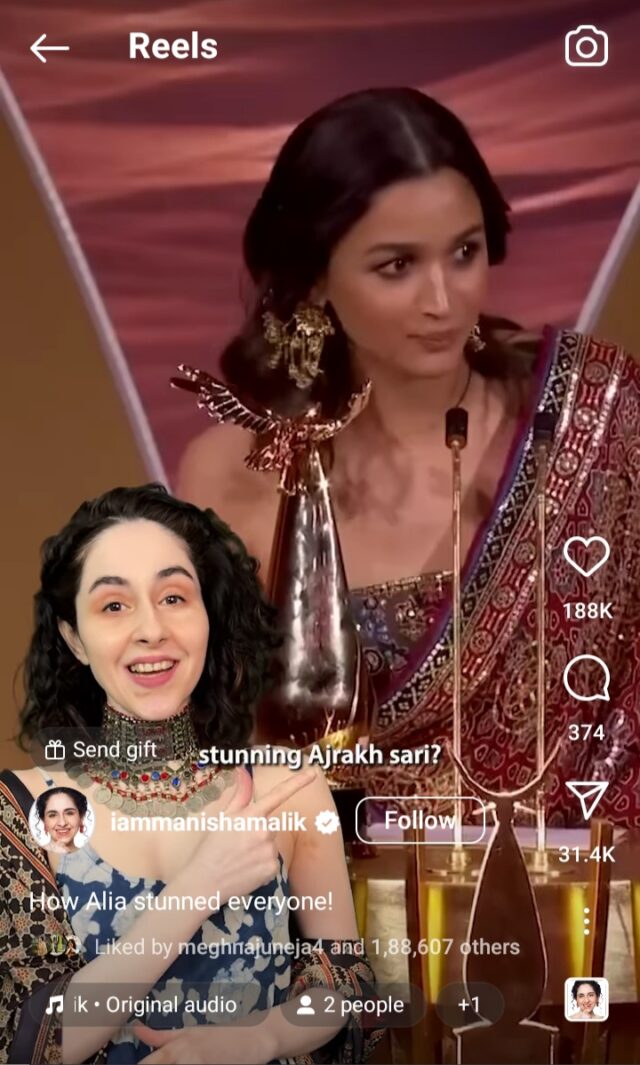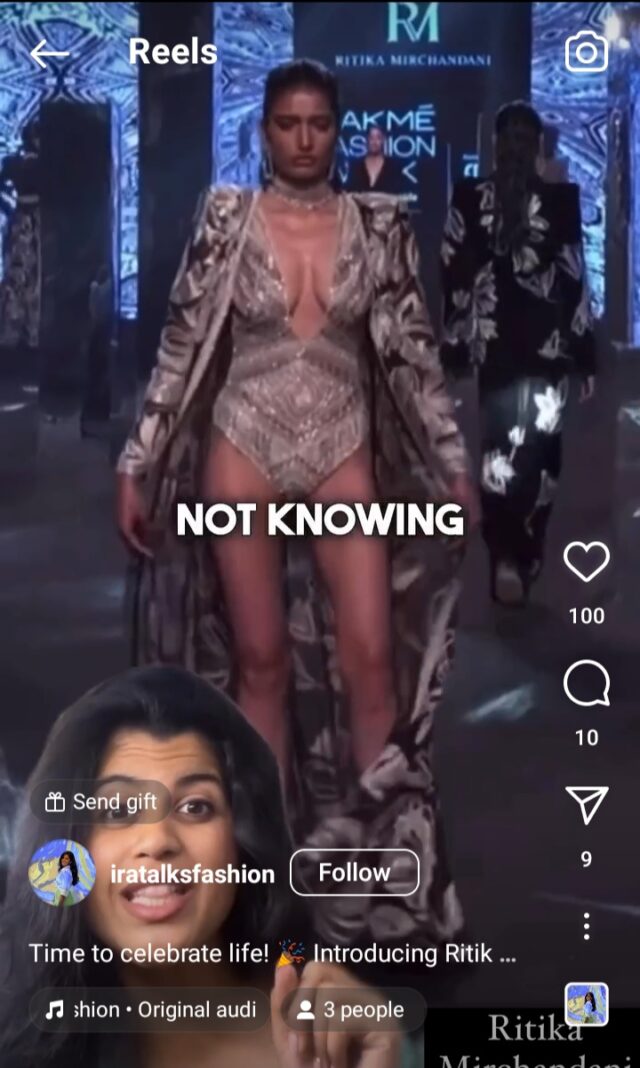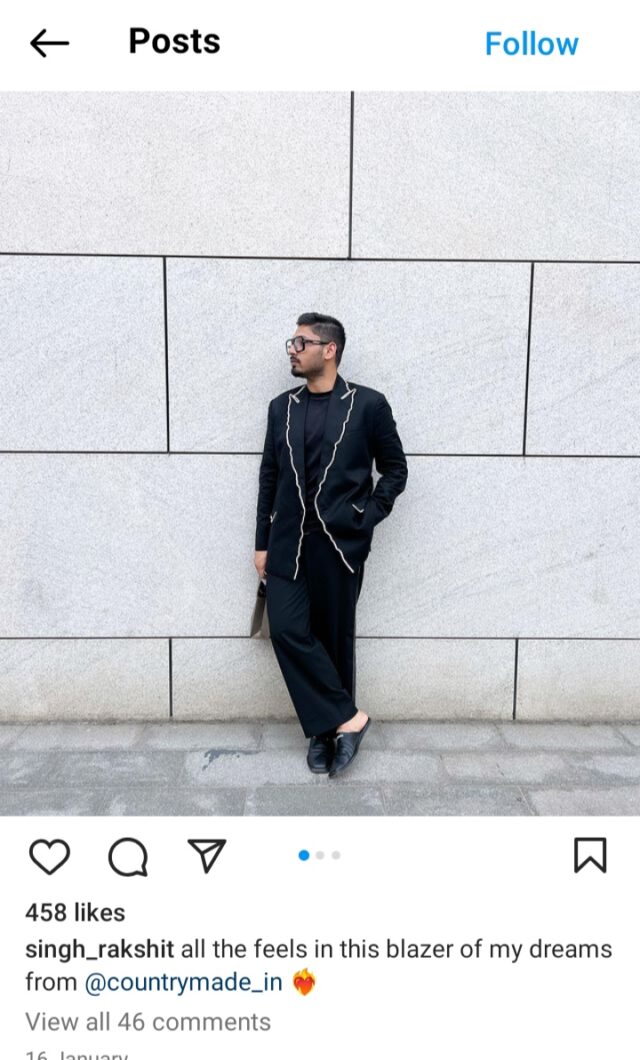In the ever-evolving landscape of fashion commentary, traditional avenues like magazines Vogue and Elle have been joined, and sometimes challenged, by the advent of digital platforms.
What once was the domain of glossy pages is now accessible to anyone with a smartphone and a point of view. Blogs like High Heel Confidential paved the way for this democratization, but it was social media, particularly Instagram, that truly revolutionized the game.
Enter handles like Diet Sabya and Diet Paratha, known for their candid critiques of celebrity fashion. But now, these platforms face competition from a new generation of commentators like Sufi Motiwala, Manisha Malik, Ira Aggarwal, and Rakshit Singh.
These Gen Z influencers are not content to merely comment on celebrity outfits; they’re breaking down barriers and expanding the conversation to include topics like fashion history, brand strategies, and luxury market insights.
Differences Between Gen Z Commentators And Celebrity Fashion Critics
Earlier, fashion commentators often adopted a more formal and traditional tone in their critiques, resembling that of established fashion magazines. They tended to focus primarily on analyzing high-profile events, celebrity outfits, and runway shows.
In contrast, Gen Z commentators bring a fresh and contemporary approach to fashion commentary. They infuse their content with humor, wit, and relatability, catering to a younger audience accustomed to social media platforms like Instagram and TikTok.
Gen Z commentators are also more inclined to address a wider range of topics beyond just celebrity fashion, including fashion industry issues, sustainability, and inclusivity.
Also Read: This is Why Toxic Positivity Is Out And Ranting Is In
The content format differs significantly between the two generations of commentators. Earlier commentators primarily relied on written articles in magazines or blogs, often accompanied by high-quality images.
Gen Z commentators, on the other hand, leverage the visual nature of platforms like Instagram and YouTube to deliver their commentary through short-form videos, reels, and stories. This shift towards more visual and interactive content reflects changing consumer preferences and the rise of social media as a dominant platform for fashion discourse.
While both sets of commentators aim to engage their audience, their methods vary. Earlier commentators primarily relied on one-way communication through their articles or editorials, with limited opportunities for audience interaction.
In contrast, Gen Z commentators actively encourage audience engagement through features like comments, polls, and Q&A sessions on social media platforms. They prioritize building a community and fostering dialogue with their followers, creating a more inclusive and participatory environment.
Earlier fashion commentators often gained recognition and influence through their association with established media outlets or fashion publications. Their authority was largely derived from their institutional affiliations and credentials within the fashion industry.
On the other hand, Gen Z commentators have emerged as influential voices through self-publishing on social media platforms. They have built their personal brands and amassed large followings based on their unique perspectives, creativity, and authenticity. While some may lack formal training or industry connections, they leverage their online presence and engagement to establish credibility and influence within the fashion community.
The Rise Of Gen Z Commentators: Challenging The Status Quo
The union of Aamir Khan’s daughter, Ira, with fitness coach Nupur Shikhare became the talk of the town, hailed as the wedding of the season. However, amidst the flurry of admiration for the fashion showcased at the event, Sufi Motiwala stirred controversy on Instagram.
With a hint of humor, he quipped, “These are dadaji chappals that even dadajis aren’t wearing because they moved on to sneakers,” poking fun at Ira’s choice of footwear. His comment quickly went viral, shifting the public gaze to Motiwala, a Gen Z fashion enthusiast from Mumbai with a growing following that even includes prominent figures like Karan Johar.
Sufi Motiwala, is a name that has become synonymous with sharp wit and unfiltered commentary. With his Instagram handle @sufimotiwala boasting a formidable 157K followers, Motiwala is at the forefront of this burgeoning movement.
His hot takes on trending events, coupled with his trademark sneer, have earned him a loyal following and collaborations with major brands like Nykaa and Kicky and Perky. As he puts it, his content is like “breaking news versions of content creation,” capturing the zeitgeist with every reel.
But Motiwala is just one of many in this new breed of fashion commentators. Manisha Malik, with her modest 2.63K followers, takes a different approach. Hailing from a small village in Rajasthan, Malik’s journey to fashion commentary was serendipitous. What started as ‘OOTD’ reels evolved into deep dives into fashion history and Indian heritage.
“Like many others, I also started out with OOTD reels, etc. It was my husband who suggested that the nuggets I tell him about fashion can become good content,” remarked Malik. Today, her Instagram reels garner millions of views, with her reel on the traditional head jewellery, saggi phull, amassing a staggering 11 million views.
Beginning with a Bollywood hook featuring Parineeti Chopra wearing a saggi phull in Kesari, Malik seamlessly transitions into explaining its historical significance and its cultural significance among married women in Punjab and Himachal Pradesh.
Her reels on topics like the traditional head jewellery, saggi phull, garner millions of views, weaving together Bollywood hooks with historical insights. As she aptly puts it, “I used to think my content was too nerdy, no one will watch it. I won’t get the numbers.” But her meticulous research and storytelling have proven otherwise, captivating audiences with every post.
Malik took a proactive approach to enriching her understanding of styling while producing content, aiming to bolster her technical expertise in various aspects, including textiles and jewellery.
She delved into the history of fabrics such as Ajrakh and Banarasi, offering valuable tips on discerning original fabrics to avoid being duped. With a YouTube channel boasting 2.02 lakh subscribers and a blog, all seamlessly integrated, she maintains a cohesive online presence.
Despite their differing styles, both Malik and Motiwala share a conversational tone when relaying technical information. Malik excels at breaking down complex concepts without sounding condescending, while Motiwala infuses his critiques with humor and entertainment value.
Their content, characterized by bright photos, smooth editing, and a fast-paced delivery, caters to audiences who prefer consuming information in bite-sized nuggets. Behind the scenes, however, lies extensive research that belies the apparent ease with which they present their content.
At 23 years old, Aggarwal, a computer science engineer at Microsoft, is still in the process of carving out her niche as a fashion commentator on Instagram, boasting around 3,900 followers.
Aggarwal reminisces about her journey into the world of fashion, recalling a pivotal moment when her interest was piqued. “My mom caught me watching Fashion TV one day, and there were models in skimpy outfits – that was the end of Fashion TV for me. But once she realized my genuine interest in fashion, she bought me my very first Vogue magazine,” she reveals.
Her Instagram reels serve as a gateway for “fashion outsiders” like herself, offering accessible and engaging content to a diverse audience. Despite her background in computer science, Aggarwal’s passion for fashion led her to establish a fashion society while pursuing her degree.
Now, she balances her corporate job with her creative pursuits, using her platform to share insights on brand strategy failures and the nuances of celebrity runway walks. Notably, her reels on these topics have garnered millions of views.
Aggarwal’s journey exemplifies the intersection of passion and profession, showcasing how individuals can leverage their diverse interests to carve out a unique space in the digital landscape of fashion commentary. “I think the most memorable moment in my journey was when model Shimona Surendranath commented on my reel and gave a shoutout,” recalls Aggarwal, reflecting on a highlight of her career.
While Aggarwal navigates her path in the fashion commentary realm, Rakshit Singh has tapped into India’s burgeoning interest in the luxury market. With a dedicated following of 34.5K on Instagram, Singh educates his audience on discerning between authentic luxury items and their counterfeit counterparts. Armed with a background in brand management, he serves as a trusted guide through renowned brands like Louis Vuitton and Prada.
“I have to just step out into the neighborhood market to find dupes of sarees worn by Bollywood actors in various movies,” reveals Singh, who also works part-time as a designer for Tann-ed, a luxury leather brand.
Singh’s motivation transcends mere likes and engagement metrics. “I really am not in it for the likes or I would also give in to making certain kinds of content for more engagement. It is something I genuinely enjoy doing, and I want to keep doing that,” he asserts, emphasizing his commitment to empowering his followers to make informed choices.
Many of Singh’s reels delve into the world of luxury handbags carried by celebrities, offering insights into investment-worthy accessories. Additionally, his brand-spotting series deciphers product placements by luxury brands on celebrities and actors in popular shows and Bollywood movies.
Navigating the ever-evolving landscape of fashion commentary requires staying ahead of the curve. While newcomers like Aggarwal may not yet receive invitations to red-carpet events or international fashion weeks, they play integral roles in an ecosystem driven by the rapid consumption of trends.
Singh reflects on the evolution of fashion commentary in India, noting, “I think it started 10 years ago, when the first bloggers came out in India, and started writing about fashion. It’s natural that fashion commentators are now becoming popular today.” Unlike a decade ago, today’s Indian consumer is more attuned to trends and brands.
Motiwala, with his irreverent humor and biting critiques, has garnered a massive following and lucrative brand collaborations. His ability to distil complex fashion trends into digestible content has made him a force to be reckoned with in the industry. Similarly, Malik’s deep dives into Indian heritage and handicrafts have earned her a dedicated fanbase and a platform to educate her audience on the nuances of fashion.
Aggarwal, with her unique blend of computer science expertise and fashion commentary, offers a fresh perspective on brand strategies and celebrity style. And Singh, with his focus on luxury market insights, empowers his followers to navigate the world of high-end fashion with confidence. Together, they represent a diverse array of voices that are reshaping the fashion landscape one reel at a time.
Challenges And Opportunities Ahead
While these Gen Z commentators have found success in challenging the status quo, they also face challenges in maintaining relevance and authenticity in a rapidly evolving industry.
Shobhaa De, a prominent voice in Indian fashion and culture, acknowledges the impact of these new influencers, stating, “I absolutely love the new breed of snarky fashion commentators. They have created their own space and gained a sizeable following. Unfiltered, cheeky and in your face, designers are definitely impacted by their uncut views.”
As Shobhaa De notes, the allure of fame and access can sometimes overshadow their original intentions. Yet, for many of these influencers, the passion for fashion and the desire to educate and empower their audience remain paramount.
As the fashion industry continues to evolve, one thing is clear: the era of traditional gatekeepers is waning, and a new generation of commentators is rising to take their place. With their unique perspectives, diverse backgrounds, and unfiltered voices, these Gen Z influencers are redefining what it means to critique and celebrate fashion in the digital age.
De’s sentiment underscores the growing influence of Gen Z commentators in an industry once dominated by established critics. As these influencers continue to carve out their niche and engage with audiences in innovative ways, the future of fashion commentary looks more diverse and dynamic than ever before.
Together, these commentators represent a seismic shift in the fashion industry. Gone are the days when Vogue and Elle held a monopoly on style critique. Now, it’s the era of bite-sized nuggets of information packaged in slickly edited reels. From Bollywood’s red carpets to the streets of Mumbai, these Gen Z commentators are democratizing fashion commentary one reel at a time. As they continue to evolve and adapt, one thing is certain: the future of fashion critique has never looked more diverse, dynamic, and exciting.
Image Credits: Google Images
Sources: The Print, BBC, Vogue India
Find the blogger: Katyayani Joshi
This post is tagged under: fashion, fashion critiques, fashion commentators, vogue, Elle, social media, Instagram, Rakshit Singh, Ira Aggarwal, Manisha Malik, celebrity fashion, Gen Z commentators, magazines
Disclaimer: We do not hold any right, copyright over any of the images used, these have been taken from Google. In case of credits or removal, the owner may kindly mail us.

























